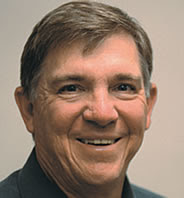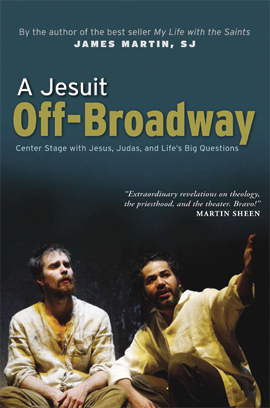
"Pilgrims to the Northland,"
by Marvin R. O'Connell
The story of the how a Catholic archdiocese took root on the bluffs along the upper Mississippi River is chock full of stories -- stories about the people who planted those roots and those that nurtured them, stories that will enlightne you, force a chuckle out of you, perhaps even shock you.
Marvin O'Connell tells as many as he could fit into 615 pages of this early history of the Archdiocese of St. Paul and Minneapolis.
Take this lovely anecdote:
When a German-speaking Benedictine priest served the fledgling Bohemian parish of St. Wenceslaus in New Prague back in 1859, a unique way to overcome the language barrier was devised so that the Czech-speaking parishioners could confess their sins via an interpreter. Father O'Connell writes:
"The priest faced the penitent, and both of them were separated from the interpreter by a thin wall. The priest enunciated in turn the Ten Commandments in German, which the interpreter translated loudly into Bohemian. The penitent either nodded -- meaning he had transgressed in that regard -- or shook his head in denial. Thus secrecy was observed and embarrassment avoided, and sacramental absolution could be duly administered."
No mere ecclesial history
There is a minimum of the kind of statistical growth numerology that populates too many accounts of church history. Instead, Father O'Connell puts the history of the Catholic Church in the United States -- and of U.S. Catholics -- into its national and international perspectives, always with human touches.
So valuable are the introductory pages to each chapter that explain what was going on in the nation -- or in the world -- at a particular juncture in time between 1840 and 1962, where O'Connell ends this work. As much as he can the priest of the archdiocese and University of Notre Dame professor emeritus helps readers understand what shaped the church that straddles the Mississippi today, and especially what -- and who -- was responsible for making that happen.
Of course bishops and archbishops play major roles, with the iconic John Ireland taking over the stage by force of length of service from the community's earliest days through the early 20th century, and by force of personality. It was Archbishop Ireland's presence on the national stage as the spearhead of Americanization -- that movement that promoted the concept that this new land of freedom was the best place for the Catholic faith to flourish, and that freedom and faith were the best of partners.
Not everyone agreed, including some in high places in the church both in the United States and at the Vatican.
O'Connell covers the controversy with balance, framing well the crucial questions that made the controversy so volatile. As European immigrants arrived, he asks,
"Did they, once landed in New York or Philadelphia, discard their language, their traditions, their folkways, in short their nationality? And did the Catholics among them, faced by a culture created and dominated for two and a half centuries by Protestant Anglo-Saxons an Scotch-Irish, discard their faith? These were the crucial questions confronting the American bishops in the 1880s. and they intertwined to form another: to what degree did the preservation of the immigrants' faith depend upon maintaining the habits and customs of the old country?"
Ireland was of the mind that immigrants had to untie the apron strings to the old country and become American in order to be respected and take their rightful place in order that their faith influence American culture.
Heroes among the priests
The challenges that had to be overcome by the area's episcopal leaders fills pages, to be sure, but O'Connell spends just as much if not more time on some of his priest heroes, people from the St. Paul-Minneapolis archdiocese who have influenced both the world and the church. He lovingly gives credit, too, to the women religious -- the Sisters of St. Joseph of Carondelet in particular -- for their selfless service to the People of God not just in the Twin Cities but across Minnesota and the Dakotas, as the Diocese of St. Paul was originally defined.
Generous oil man Ignatius A. O'Shaughnessy is granted his due in this history, too.
But two priests capture many pages, and deservedly so, because they influenced so many others, both clergy and lay.
There is the passionate teacher and advocate for social justice, Monsignor John A. Ryan, who grew up on a farm in rural Vermillion Township and became an adviser to Franklin Delano Roosevelt. Labeled "The Right Reverend New Dealer," Ryan was the architect and advocate of social justice principles that are now woven into the texture of American life: the minimum wage, a progressive income tax, the eight-hour work day, unemployment insurance, etc.
The early adopters of the Liturgical Movement, Benedictine Dom Virgil Michel, the St. Paul Seminary's Father William Busch get well deserved notice, but historical ink tells us more about Father John Bussard, a founder of the Leaflet Missal and Catholic Digest, which in 1936 enjoyed a circulation of a million copies a month.
Bussard -- in 1938 mind you -- convinced Archbishop John Gregory Murray -- to have the altar in the lower crypt of the new Nativity of Our Lord Church in St. Paul to be free standing, so that at Mass the priest faced the congregation and the worshipers could see and follow his actions at the altar and pray with him from their vernacular missals.
Father Bussard had argued, "The one thing necessary is to unite the faithful closely with Christ. Can that ever be done by a priest who stands with his back to them and reads Sacred Scripture to a wall?"
O'Connell faithfully reports the successes and the failures of archbishops Grace, Dowling, Murray, Brady and Byrne, but it is Paul Bussard and John A. Ryan who he calls "the two most influential Minnesota Catholics" during the middle third of the 20th century.
"Their influence spread far beyond the confines of their native state. Their approach to events and their manner of dealing with challenges, no less than the theaters in which they played out their roles, were very different. But a 'golden thread of Catholic thought' did bind them together to a degree Bussard's crusade for liturgical renewal -- its insistence on the unity and participation of the whole worship community -- possessed an unmistakable collective component, which Ryan's tireless drive for social and racial justice derived directly from his conviction that Jesus had called for a communal solution to the problems of the ages."
The war that changed everything
Archbishop Murray's opposition to the Nazis is part of the history, including his invitation to his priests to volunteer to be chaplains during World War II. The archbishop promised that any curate (associate pastor) who volunteered to be a chaplain would be named a pastor after the "inevitable triumph" (Murray's words). He kept his word.
It was the aftermath of World War II that changed Catholic status in the United States, O'Connell opines.
The G.I. Bill of Rights destroyed the traditional American class system. Young Catholics who before the war never dreamed of going to college or owning their own homes took advantage of the G.I.Bill to earn college degrees and enter the professions and management ranks, "and so participated fully in the expanding economy as they moved their big, bustling families into secure new homes." O'Connell's analysis?"
"In short, Catholics achieved what John Ireland had striven so hard for: they became part of the great American middle class. And in 1960 one of their own was elected president of the United States."
Unfortunately a review can touch only a fraction of the topics and tales Father O'Connell shares, and that's how it should be. Buy the book.
At $70, this University of Notre Dame Press tome is pricey, but it's great reading. O'Connell has a marvelous literary style with clever segues and a timely sense of humor. For example, at the installation Mass for Coadjutor Archbishop Murray, there were 5,000 worshipers ("nine of whom fainted during the lengthy ceremony"), O'Connell inserts.
Some of the history is admittedly not what a public relations person might put forward, but then O'Connell's task was history, not PR, and the author doesn't shy from the seamy side of Catholic history. There were some disreputable characters in this neck of the woods over the course of the years.
The very best anecdotes are from priests he interviewed who shared the stories of their own encounters in the seminary, parish or chancery office that add in sight and color as to what Catholic life was really like.
Finally, Father O'Connell's personal memories inserted into many footnotes add humanity to this scholarly work. Don't pass them by. -- bz



No comments:
Post a Comment